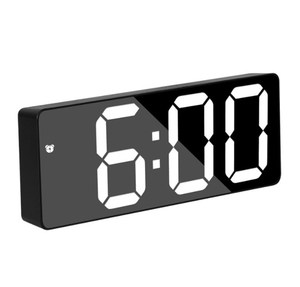















Digital clocks have gained significant popularity due to their versatility and functionality. With the evolution and advancement of technology, these clocks have transformed from simple time-telling devices into multi-purpose gadgets. This article explores the different types of digital clocks, their application, essential features, and the materials used in their manufacture.
Digital clocks are available in a multitude of styles, shapes, and sizes, meeting a broad spectrum of user requirements and preferences. The small digital clock, suitable for travel or compact spaces, offers basic features while maintaining portability and convenience. On the other hand, the large digital wall clock provides high visibility, ideal for public spaces or for those with visual impairments. The transition towards smart technology has led to the emergence of the Bluetooth alarm clock. This digital clock type synchronizes with smartphones, playing music or using the phone's alarm system to wake up the user. The LED digital clock is another popular variant, offering bright, clear displays that can be seen even in dark rooms. This type of digital clock is energy-efficient and long-lasting.
Digital clocks are not limited to telling time. They have broadened their applications to include various user needs. An electric alarm clock, for example, is commonly used in bedrooms to help people maintain their sleep schedules. Similarly, the LED wall clock is often seen in offices, schools, and other public places, providing a clear display of time for everyone in the vicinity. For those who appreciate outdoor activities, an outdoor digital clock can be a handy companion. This clock type is designed to withstand harsh weather conditions while providing accurate time. On the other hand, the modern digital clock integrates with other smart home devices, offering functionalities like weather updates, reminders, and music streaming.
The appeal of digital clocks lies in their diverse features. The large display digital clock for elderly, for instance, is designed with big, bold digits, making it easy for seniors to read the time. Similarly, the digital clock with seconds provides detailed time information, suitable for tasks requiring precise timing. Some digital clocks come with alarm functions, but some offer the added convenience of multiple alarms. This feature is particularly useful for those with different schedules or tasks throughout the day. Furthermore, the LED alarm clock offers a gentle wake-up call with its gradually increasing light intensity, mimicking the natural sunrise.
Durability and aesthetic appeal are essential considerations when it comes to the materials used in manufacturing digital clocks. Plastic is frequently utilized because of its cost-effectiveness and adaptability. It is lightweight, easy to mold, and comes in various colors, making it ideal for creating LED digital wall clocks. Metal is another material often used in digital clock manufacturing. It gives the clocks a sleek, modern look while ensuring durability. Metal is typically used in high-end digital clock models, including certain types of outdoor clocks and large LED clocks.
Digital clocks have evolved significantly over the years, offering a wide range of types, applications, and features. From small, portable clocks to large, wall-mounted timepieces, there's a digital clock to suit every need and preference. Whether it's a basic LED clock or a multifunctional Bluetooth alarm clock, the right choice will depend on the user's specific requirements and lifestyle.